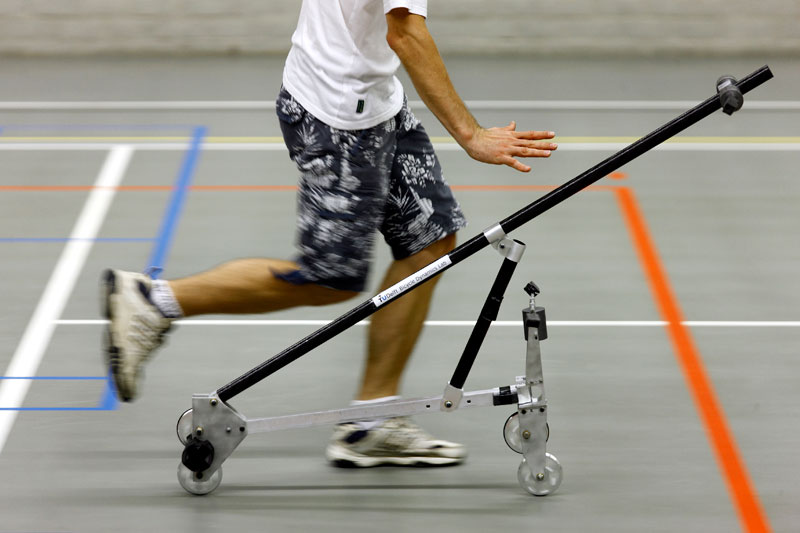Bicycle Stability – Everything Works Together

New theoretical research in bicycle stability shows that many parameters interact to make a bicycle stable. No single parameter (e.g.: trail, head angle, wheel size, weight distribution) determines whether a bicycle is stable or not. When one parameter is altered, then the other parameters may need to be changed to arrive at a stable bicycle again. This matches our on-the-road experience of having to adjust a bike’s geometry for different wheel sizes, load placements, etc.
For more than a century, scientists have tried to resolve why bicycles are self-stable, that is, why they tend to stay upright even without rider input. When a bicycle starts falling over, it automatically steers into the lean, thus righting itself (see video below). In the past, it has been assumed that either the gyroscopic forces of the front wheel cause the wheel to steer into the lean, or that geometric trail and related forces re-align the front wheel.
[youtube http://www.youtube.com/watch?v=j0ilP8kb8dM?rel=0&w=640&h=390]
Bicycle Quarterly contributor Jim Papadopoulos was part of a team of researchers from the Technical University in Delft (Netherlands) and Cornell University who examined the stability of bicycles. Their paper was published in the prestigious journal Science this month, so we now can share their findings and discuss the implications.
Based on theoretical calculations, they discovered that neither trail nor gyroscopic forces are required to make a bicycle stable. To test this, they built a bicycle with negative trail and a second set of wheels that spin in the opposite direction and cancel the gyroscopic forces of the wheels (see photo on top of this post).
As predicted by their calculations, this bicycle was able to roll without falling over, as long as it remained above a certain speed. Even if it was pushed sharply sideways (see the researcher push the bike in the movie below), it would right itself and continue to roll. The authors concluded that the bike steered into the lean because the mass distribution makes the front fork fall faster than the rear frame when the bike starts to lean. If the bike falls to the left, the front wheel turns to the left. Moving the front wheel to the left steers both wheels underneath the center of gravity. The bike is upright again and goes straight.
[youtube http://www.youtube.com/watch?v=v6GUZ2aEPLM?rel=0&w=640&h=390]
The “no trail/no gyro” test bike was a final validation of the bicycle stability calculations. The researchers found that no single number could predict whether a bike was stable. There are many possible designs with and without trail, and with and without gyroscopic forces, that are unstable. Many factors are interrelated, and together, they determine the self-stability of a bicycle.
Does this mean that trail and gyroscopic forces are unimportant in determining a bicycle’s handling? Not at all. However, the research confirms that these factors should not be taken in isolation. All factors are interdependent, and if you change one, you need to change the others to retain the desired handling characteristics of your bicycle. That means that to offer similar handling, a bike with a handlebar bag should have a different geometry from a bike carrying a saddlebag. A geometry optimized for single bike will not work the same on a tandem. Simple statements like “xx mm of trail offers neutral handling” only make sense in very narrow applications (for example, racing bikes with 23 mm tires), if at all.
I hope this research will lead to a confluence of theory and practice of bicycle handling. In the past, bicycles have been designed by trial-and-error. Similarly, Bicycle Quarterly’s articles on bicycle handling came from riding different bicycles, and making observations about them, rather than trying to solve the problem of bicycle handling mathematically. Theoretical studies still have a long way to go, since they do not yet include rider inputs. That said, a better understanding of the physics of bicycle stability can only help with our understanding of these fascinating machines.
Further reading:
- More on the latest research, including a final draft of the Science paper.
- More video of the test bike.
- How to Design a Well-Handling Bicycle. Bicycle Quarterly Vol. 5, No. 3.
- Front-End Geometry for Different Speeds, Loads and Tire Sizes. Bicycle Quarterly Vol. 3, No. 3.


